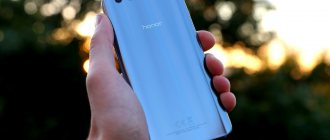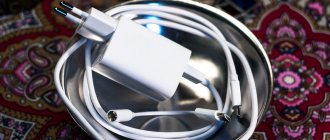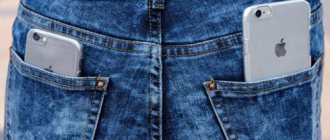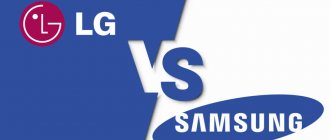Android OS v8.1 (Oreo)
Qualcomm Snapdragon 625 MSM8953
4 GB / 64 GB
5.5 inches 1080 x 1920 px
The Yota YotaPhone 3+ (YOTA3P) smartphone was released in 2022. It is equipped with Qualcomm Snapdragon 625 MSM8953 chipset, 4 GB RAM and 64 GB internal memory.
Yota YotaPhone 3+ runs on Android OS v8.1 (Oreo) out of the box. It comes with a 3300 mAh Li-Po battery, non-removable. It is equipped with a 5.5-inch AMOLED display with a resolution of 1080 x 1920 px. AMOLED technology is widely used in smartphones due to its excellent color reproduction and very deep blacks.
Characteristics of Yota YotaPhone 3 in detail
Platform
Chipset Qualcomm Snapdragon 625 (MSM8953) Octa core CPU 8 x ARM Cortex-A53 @ 2.00 GHz 64-bit Yes GPU Adreno 506 @ 650 MHz NPU No Process technology 14nm FinFET (LPP)
Memory
RAM 4 Gb – LPDDR3 @ 933 MHz (Single Channel) Built-in storage 64 Gb/128 Gb – eMMC 5.1 Memory expansion No
Screen
Resolution 1080 x 1920 (FullHD) Aspect ratio 9:16 Matrix type AMOLED Diagonal 5.5″ Area ~83.4 cm2 Fill percentage ~72.2% (of the total front surface area) Pixel density ~401 ppi Security Yes
Connection
Communication standards GSM, UMTS, TD-SCDMA, LTE 2G GSM 850 / 900 / 1800 / 1900 MHz CDMA BC0 3G WCDMA B1 2100 MHz, B2 1900 MHz, B5 850 MHz, B8 900 MHz 3G TD-SCDMA B34 2000 MHz, B39 1900 MHz 4G LTE FDD-LTE B1/B3/B5/B7/B8/B20, TDD-LTE: B34/38/B39/B40/B41 (2545 - 2655 MHz) LTE support Yes LTE categories Category-7 DL / Category-13 UL LTE Speed Up to 300 Mbps download, up to 150 Mbps upload LTE device categories indicate the maximum speed at which it can send and receive data on 4G LTE networks through carrier aggregation. Number of SIM cards 2 Type of SIM cards Nano SIM Modem Snapdragon X9 LTE
Cameras
Main camera
Type Single Resolution 12.0 MP Autofocus Yes Aperture No data Features Face Beauty, Face Detection, Panorama Shot LED flash
Front-camera
Resolution 13.0 MP Aperture No data
Interfaces
WiFi IEEE 802.11 a/b/g/n/ac, 2.4 GHz + 5 GHz, Wi-Fi Direct, DLNA, Wi-Fi access point mode is a technology for building wireless local networks based on the IEEE 802.11 family of standards. Supported by all modern smartphones and many mobile phones. Bluetooth v4.2 Bluetooth is a universal wireless interface for exchanging data between various types of devices at close range. Can be used for file transfer, audio streaming, network connection, printing and other purposes. The newer the version, the greater the speed and number of supported profiles. Navigation GPS, A-GPS, GLONASS For at least 10 years, smartphones have supported the geolocation function using data from satellite navigation systems. At the moment, these are the American-developed GPS, the Russian GLONASS, the Chinese BeiDou and the European GALILEO. As a rule, smartphones support the first two and optionally the rest. NFC Yes The built-in NFC module of a smartphone is mainly used for contactless payment in applications like Google Pay and Samsung Pay. Can also be used to read data from contactless cards, transfer files, etc. Read more here. Infrared port No Some smartphones have a built-in IR port. In the past, it was used to synchronize data both between two mobile phones and between a phone and a PC. However, now, due to its low speed, the infrared port is used mainly to control external devices in remote control mode. FM radio Yes Built-in radio receiver that allows you to listen to radio stations operating in the FM range. In most cases, it only works when headphones are connected, since the wire is used as a communication antenna. However, there are devices with a built-in antenna. 3.5 mm audio No Standard audio jack for connecting wired headsets and headphones. Since 2016, some smartphone manufacturers, following Apple, began to abandon it. In this case, to connect regular headphones, you need a special adapter for Lightning/USB Type-C. USB USB Type-C, On-The-Go The type of USB connector installed in the smartphone and the capabilities it supports.
Sensors and biometrics
Sensors Electronic compass, Gravity sensor, Gyroscope Fingerprint scanner Yes Scanner location Built into the Home button Scanner response time 0.1 s Face scanner (Face ID) No Iris scanner (IRIS) No
Power supply
Battery capacity 3300 mAh Battery type Li-ion Removable battery No Fast charging Yes Wireless charging No
Software
Operating system Android 7.1 Nougat Shell No Over-the-air (OTA) update Yes Sending messages SMS, MMS, Email, Push Email, IM Internet browser HTML5, CSS, JavaScript Audio formats AAC, AMR, Midi, MP3, WAV Video formats 3GP , AVI, MKV, MP4 Graphic formats BMP, GIF, JPEG, JPG, PNG Voice assistant Google Assistant
Physical parameters
Dimensions 153.6 x 75.2 x 7.9 mm Weight 170 g Package dimensions 196.0 x 98.0 x 48.0 mm Package weight 740 g Protection class No Colors Black, Slate Blue
Performance
Geekbench Missing AnTuTu Data Missing PassMark Missing Data
Important Note : Unfortunately, we cannot guarantee 100% accuracy of all data presented on this page, but we are constantly working in this direction. If you notice an error in the device settings, we will be very grateful if you report it in the comments.
Top
Battery and charger
A non-removable battery is a tradition for YotaPhone. You will have to change it only at service centers for some money. High capacity combined with energy-saving technologies should provide a service life of several days - nothing is known about this yet. But many people will like the fast charge function, since they will have to wait less. We connect the charger, wait 15 minutes - you can last on this amount of charge until the end of the day. Please note that the USB Type C connector is used here.
A few rumors - it is expected that YotaPhone 3, released for the Russian market, will receive support for Qi wireless charging. Why it is not included in the model for the Chinese market is unknown.
Image gallery
(No ratings yet)
Sensors and other little things
The set of sensors in YotaPhone 3 is quite impressive - here we will find a light sensor, an accelerometer, a digital compass, a gyroscope (cool thing for panoramic photos) and a proximity sensor, as well as a barometer and a fingerprint scanner (the latter is located under the main display). We talked about a set of wireless modules, but for some reason the new YotaPhone 3 lacks NFC - you won’t be able to use a smartphone instead of a bank card. But there is information that this module will still appear in the version for the Russian market.
Technologies
As for the introduction of advanced technologies and innovative solutions and developments into a new modification of the domestic smartphone, here the company’s management has lifted the veil of secrecy. With a probability of 80% it can be said that Yotaphone 3 will be equipped with the following know-how in the field of electronics and information technology:
- virtual camera;
- tactile display;
- wireless charger;
- acoustics.
Yotaphon 3 can compete with global smartphone manufacturers
As for equipping the new phone with a solar panel to recharge the battery, this most likely will not be implemented. Because it is a yellowish film that is stuck on the display, thereby reducing the clarity of the image. According to the statement of the head of the company, due to the imperfection of this technology, the consumer is not ready to sacrifice the quality of information display for the sake of being able to recharge the battery by 15 - 20%.
Virtual camera
Video calls, as well as photos such as Selfies, are already among the main capabilities of modern phones. When performing such operations, the smartphone user looks not at the camera, but at the display. As a result, the gaze turns out to be slanted to the side.
The basic operating principle of this development is the placement of two front cameras on both sides of the main display. When taking photos or videos, images from two cameras are processed and combined into one image using specialized software. Thus, the user looks at the screen, and the image is broadcast or saved (for example, a photograph - a selfie) without distortion and has high clarity and quality.
Attention! Improved control, synchronization and operating mode of two displays allow you to use applications on equal terms, which increases the convenience and comfort of using the device.
Tactile display
Tactile screen technology is the most advanced development in the field of touch devices. When you touch the surface of the smartphone with your finger, you get a feeling of pressing the keys. Depending on the location of the touch, the user experiences different sensations. This development, in addition to physical contact, provides the opportunity to increase the positioning accuracy and sensitivity of the sensor several times.
Wireless charger
The smartphone manufacturer is actively developing wireless battery charging. The successful implementation of this solution is facilitated by the high throughput of the e-ink display, which is several times higher compared to metal cases. In addition, recently Power Banks that support this technology have begun to appear on the market.
Acoustics
In the Yotaphone 3 smartphone, the speaker system will differ significantly from the standard version, which uses speakers to emit sound. The display glass will be used as an audio signal emitter in the domestic phone. The developers claim that the use of this technology will help achieve high clarity and sound quality.
Based on the available information, we can conclude that the Russian third-generation smartphone can compete on equal terms with analogues produced by Samsung and Apple. For the average consumer, the disadvantage is the price of $350–500, which corresponds to the cost of premium devices.
Presentation: a model for true connoisseurs of literature
The long-awaited presentation of Eta von 3 took place in one of the cities of the Middle Kingdom - Beijing. Everyone who visited the Russian Embassy was able to hear the first official statements about the new product. As it became known, the creation of Yotaphone 3 will be carried out by baoli Yota technologies. This smartphone is a new representative of gadgets, equipped with almost all the necessary functions. This, in turn, gives an answer to the question that worries many: will the 4th generation Internet work on the device? Yes, the Yota von 3 phone supports 4G. It will also be equipped with 2 SIM cards, and at the same time have high performance (as you know, many mobile devices slow down significantly with several SIM cards).
The production of the latest model devices began in September 2022. The first country where the new product appeared on store shelves was China. At the moment, Yota 3 pre-order is not yet available on the official website.
During the presentation, the developers emphasized that literature lovers would especially like the device. Those who experience daily adventures on the pages of books will definitely appreciate the many applications for opening and reading books in electronic format. The gadget includes the “Library of Modern and Classical Literature” application.
Smartphone screens
Yota manufacturers remained true to themselves and did not abandon the main feature of their smartphone - two displays. In addition, developers keep up with the trends set by such large companies as Apple and Samsung, and develop their product by imitating the model of foreign manufacturers.
That is why the Yotaphone 3 smartphone went on sale in several configurations, differing primarily in display sizes. The standard diagonal will be 5.5 inches, a figure that is neither too large nor too small. Also, the configuration will have a significant impact on the price of Yotaphone 3.
The main display will have a resolution of 1920x1080 pixels and support video playback in FullHD quality. Regarding the screens located on the back of the smartphone, everything will change slightly. These displays will continue to use electronic ink technology, but their resolution has increased significantly compared to Yotafons of previous generations.
Unfortunately, the manufacturer did not meet the expectations of customers, so the new smartphone will not use an IPS matrix, but a cheap AMOLED version. The overall design of the displays has also been changed. The developers abandoned rounded corners in favor of a flat surface, due to the fact that the curved shape reproduced the picture with distortion at the rounding points











